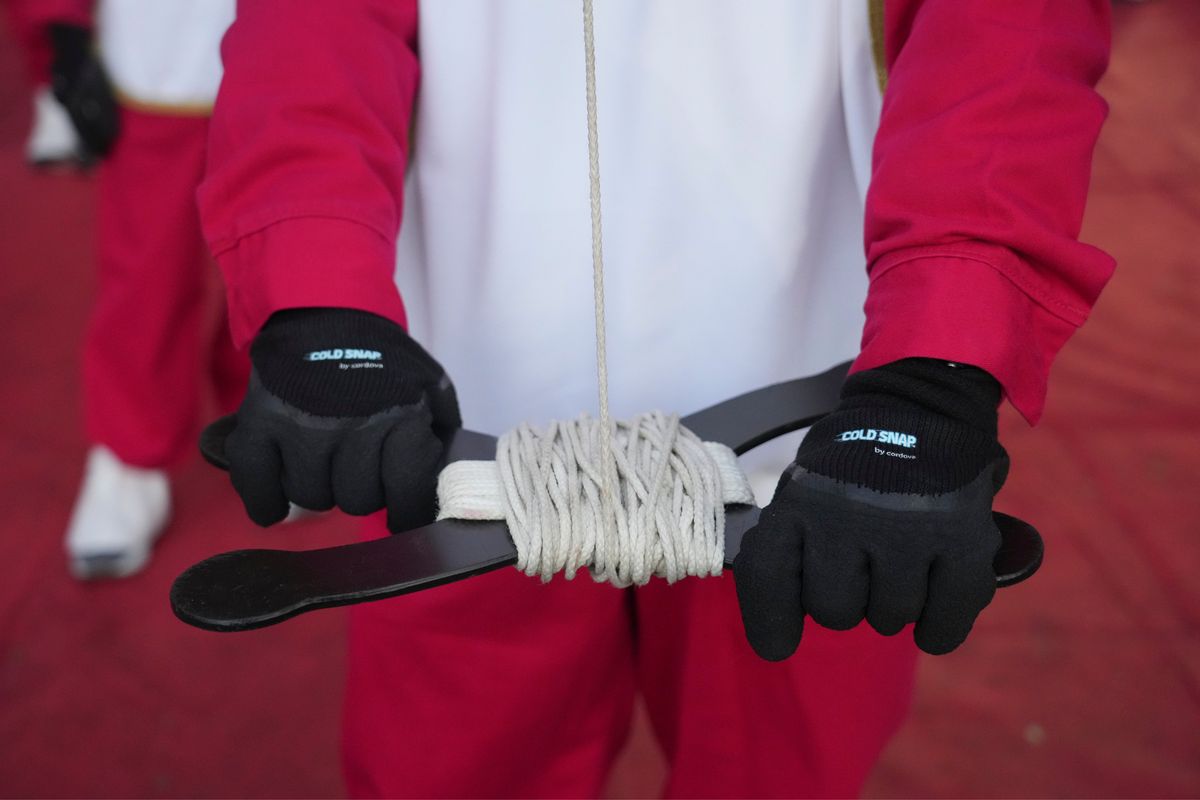Thanksgiving rite springs eternal with annual Macy’s parade

NEW YORK – “With a retinue of clowns, freaks, animals and floats, the bewhiskered man in red, in sight of thousands of persons, arrives at 9 o’clock …”
So began the first New York Times coverage of the first Thanksgiving parade put on by Macy’s department store on Nov. 27, 1924. Ninety-seven years, 11 months and 28 days later, 10-year-old Lynden Alford stood along the parade route at Columbus Circle screaming her head off at the marching bands, baton twirlers and, of course, giant balloon characters – and taking umbrage at the long-ago parade reporter’s characterization of her favorite spectacle.
“‘Freaks?’” Lynden exclaimed in horror as a person dressed as a cookie tossed confetti over her hot-pink hooded jacket and matching pants. “These are people that entertain us and have been entertaining us since 1924!”
On Thursday, the 98th annual Macy’s Thanksgiving Day Parade wended its way across the West Side of Manhattan once again. Its retinue of giant helium balloon characters, from SpongeBob SquarePants to Bluey the dog, bobbed across a perfect blue sky.
Beneath them trundled elaborate floats, including one from Toys “R” Us featuring Geoffrey the Giraffe spinning DJ decks, and another shaped like a giant alligator with a replica of the French Quarter of New Orleans on its back that was sent crawling down Central Park West by the Louisiana Office of Tourism. It was the second full parade since the coronavirus pandemic forced a truncated, blocklong version, and the pomp and extravagance was once again cheered down the avenues.
Bouncing in the crowd, Lynden, who is from Williamsburg, Brooklyn, considered the long history of the parade, and she grew heated in her defense of the spectacle.
“They are not freaks, not clowns, they are perfect just the way they are!” she said.
The Clovis North Educational Center Bronco Band from Fresno, California, marched past.
“This high school came all the way from California to show us how they shine,” Lynden said, her voice attaining a squeal. “I respect them!”
A police officer nearby turned to her. “No more sugar for you,” he said.
“But I love sugar!” Lynden exclaimed.
“A feature will be the release into the sky, at the end of the parade, of five gigantic figures,” announced a Nov. 27, 1928, preview of the pageant in the Times. “Fantastic and comical, these figures are built around helium-inflated balloons as bodies.” The article continued, “The biggest goldfish ever seen will be a thirty-five foot specimen rolling along in the parade.”
On Thursday, 93 years, 11 months and 28 days after that story was published, Barb Redding, a Macy’s employee from Illinois, walked through the parade route with a giant goldfish (less than 35 feet, but big enough) on her head.
It was her first time being in the parade, but it has long been part of her history, she said: Since she could remember, Ms. Redding, now 58, and her father had watched it together on television.
On this Thanksgiving Day, though her father has passed away, he was with her – she brought a photo of him to New York City and propped it in her hotel window in Herald Square, overlooking the parade route. “We are still watching it together,” Redding said through tears.
“A parade put on by a commercial house should not be allowed that day,” the Times wrote on Nov. 4, 1926, attributing the sentiment to a man named Hugh White Adams, a member of the Allied Patriotic Societies. That year, a group of religious societies had voiced objections to the spectacle’s potential to interfere with Christian worship on the holiday.
Ninety-six years and 20 days after Adams’ thoughts were published, Lennox Skyers, age 12, begged to differ.
“It is a celebration,” the seventh grader from the Upper West Side of Manhattan said, standing behind police barricades at 62nd Street. “It worships God too, because it is about being thankful for giving,” Lennox said.
On an upper floor of 25 Central Park West across the street, a man held his goldendoodle up to the window so it could watch the parade.
Ramcharan Jhagen, 9, was giddy for his first in-person glimpse of a parade he had previously watched only from his home in Michigan. He marveled at the idea that 98 years ago a fourth-grader like him must have watched this very parade. The event had obviously evolved, Ramcharan was quick to point out.
There was no Pinkfong Baby Shark then, nor a Wonder Bread-sponsored boat-shaped float that ejected 900 slices of faux bread, both new additions this year.
“People start innovating things for this parade,” Ramcharan said. “It might be very different from the past.”